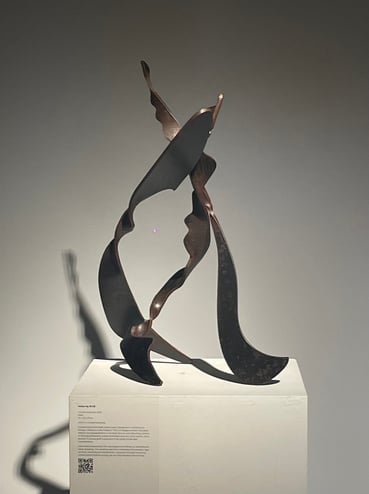Sculpture has the unique ability to unveil forms from within the medium –emerging through the interplay of material, intention, and process. Crafted from mild steel, a material chosen for its malleability, ‘circular staircase’ embodies an organic exploration of the medium –showcasing its balance between precision and fluidity. Experimentation has shaped the final structure, harmonizing the seemingly opposing qualities of metal to coexist alongside one another.
This duality allows the piece to feel both grounded and dynamic, mirroring the intricate layers of grief. Drawing from WuXing philosophy, the transformative nature of metal is present. Like metal shaped by the elements, loss reshapes our ties to loved ones, leaving behind a legacy of remembrance rather than presence. The relationship begins to exist in a metaphorical sense, rather than physical – shifting from tangible to intangible as we encounter their presence in objects, places, and fleeting moments. The sculpture twists and intersects, with its joints serving as delicate touchpoints of connection and memory. Its winding form captures the enduring presence of grief, a quiet force that weaves through our lives, calling back those we hold dear through the traces they leave behind.
A meditation on loss, it asks: if grief is a circular staircase, where do we find ourselves upon it?


It spirals back onto itself, where every intersection is familiar, yet foreign. Calling to Linda Pastan’s The Five Stages of Grief, this piece reflects how bereavement is not linear but an ever-returning motion. In WuXing philosophy, metal symbolizes autumn, dusk, return, and a decline. It echoes grief’s presence in its cycles of loss and remembrance.
Like metal tempered by fire, loss shapes and refines us, bending but never breaking. The winding steel form embodies this paradox: rigid yet fluid, enduring yet transformed –a journey through grief where transformation occurs, yet we carry forward, ever turning.
-12-2024-
Grief is a circular staircase.